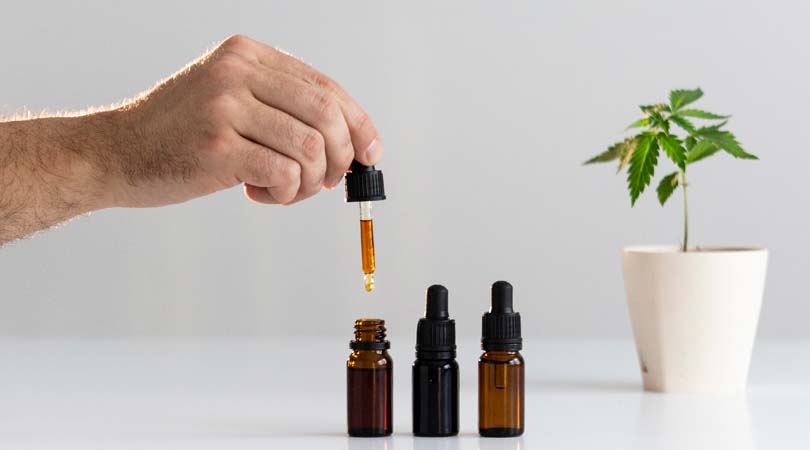When it comes to taking cannabis, there are now various options available. Apart from the traditional ‘smoking’ marijuana, you have concentrates, transdermal patches, edibles, and topicals infused with the substance in controlled amounts. Among these options is cannabis oil, a medically-approved method of ingesting cannabis. Whether you take it orally or use it to infuse baked goods, cannabis oil and its health benefits hold tremendous potential. So how can you use cannabis oil correctly? And are there any side effects? Read on to find out.
What Is Cannabis Oil and How is it Prepared?
Cannabis oil is a concentrate prepared by extracting cannabinoids such as THC and CBD from the cannabis plant. Most commercial oils are prepared via ‘chemical extraction,’ which involves using a solvent to extract the cannabinoids and other valuable compounds such as flavonoids and terpenes and adding them to carrier oils like MCT and hemp oil.
Although there are many ways of extracting oil from the marijuana plant, the CO2 extraction method is the most widely used. Quickly becoming the gold standard for cannabis oil extraction, this method produces a safer and more potent end-product that is free from chlorophyll, toxic substances, waxes, and other residues and solvents that may have been left behind.
How to Use Cannabis Oil
Even though cannabis oil doesn’t show its effects as fast as inhalation methods such as smoking and vaping, it works faster than ingesting edibles. Moreover, it is available in various potencies, from oils containing only CBD to those with CBD and varying THC concentrations.
However, the question of how you use cannabis oil is a personal preference. There are many ways to safely and effectively use cannabis oil, as we will now discuss.
1. Sublingual
The most popular method of CBD oil consumption is to take it sublingually, i.e. hold it under the tongue for about 5-6 minutes before swallowing. This allows the cannabinoids to be absorbed via the mucous membranes under the tongue and ultimately make their way into the blood.
This is considered the most effective method because, unlike ingesting pills, sublingual medicines bypass breakdown in the gastrointestinal tract and are more rapidly absorbed and at higher concentrations. Also, the concentrations of cannabinoids are usually very high in sublingual formulations; hence only a tiny amount is required to obtain desired effects.
2. Oral
Cannabis oil can also be ingested directly, i.e. rather than holding under the tongue, and the drops are immediately swallowed. Interestingly, cannabis is metabolized differently for both methods, changing how it ultimately affects your body.
Oral ingestion, be it drops, edibles, or capsules, will delay the onset of effects. The latter will kick in after about 30 to 90 minutes since the cannabinoids must pass through the liver and stomach before reaching the bloodstream. However, the effects tend to last longer.
3. Drinks
Another popular method of consuming cannabis oil, particularly for young adults and children, is to add it to drinks such as smoothies and tea.
Cannabis oil mixes rather well with mango smoothies because they share a common compound called myrcene. Moreover, cannabis-infused tea is becoming increasingly popular, some of which also contain various amino acids and balancing compounds found naturally in essential oils to aid stress relief. You can also add a few drops of cannabis oil to regular tea for the same relaxing effects.
4. Baked Goods
Adding cannabis oil to baked goods is among the traditional ways to consume cannabis. Since the plant extract has little to no taste, it can easily and routinely be used to bake anything from cakes to brownies. However, one thing to consider while baking with cannabis oil is that heating cannabis oil to temperatures above 245 degrees Fahrenheit will denature and break down THC.
5. Cooked Items
Cannabis oil can also be added to regular cooking oil – olive, coconut, sesame, or canola – and is a significant health booster for your daily meals. You can also use this oil for sautéing or roasting vegetables, marinating meat, and dressing for salads.
Determining the Dosage
Like other cannabis products, the correct dosage for cannabis oil differs for every individual. But with a bit of experimentation, you can easily find the correct dose for you.
The general rule is to start at the lowest dosage, assess the effects, and gradually increase the dosage from there if required. Your aim should be to find the lowest possible dose or that ‘sweet spot’ that provides the desired effects, and it could be even lower than the recommended dosage on the product label.
You may need to adjust the dosage with time, but most people find that a consistent dosage works best for them over the long term.
Side-Effects
Even though studies concerning cannabis oil are not very common, there aren’t any significant risks or adverse reactions reported from using it. However, specific side effects are possible, such as:
- Mood alterations (irritability, depression, anxiety)
- dizziness and drowsiness
- Hallucinations
- Low blood pressure and heart rate
- Sleep disturbances
Bottom Line
At WeedSmart, we offer a range of cannabis products. These are safe and effective means of consuming cannabis with a long list of benefits. It is an excellent option for those new to medical cannabis or who just don’t like the concept of inhalation and ingestion of capsules and pills.
So go ahead and add this beneficial plant extract to your brownies, smoothies, and salads and reap the benefits it has to offer. Explore the best online dispensary in Canada, Weed Smart, for a variety of cannabis oil products. You can also try Same-day Weed Delivery in Toronto or Weed Delivery in Vancouver.
Interesting Reads
Top Reasons Why CBD Oil is So Popular in Canada, How to Make Cannabis-Infused Oil, What’s the Difference Among Weed Dabs, Extracts, and Oils?
References
- Holland, K. (2020, July 20). CBD vs. THC: What’s the Difference? Healthline. Available at: https://www.healthline.com/health/cbd-vs-thc
- Devi, V. (2018, October 3). Comparative study of different extraction processes for hemp (Cannabis sativa) seed oil considering physical, chemical and industrial-scale economic aspects. ScienceDirect. Available at: https://www.sciencedirect.com/science/article/abs/pii/S0959652618330506
- Hazekamp A. (2018) The Trouble With CBD Oil. Karger. Available at: https://www.karger.com/Article/Abstract/489287
- Nichols, H. (2020, May 28). What are the effects and side effects of CBD oil? Medical News Today. Available at: https://www.medicalnewstoday.com/articles/cbd-oil-effects
- Toronto Weed Delivery. (2021, December 30). Same-Day Weed Delivery in the Greater Toronto Area. Available at: https://torontoweeddelivery.co/
- Weed List. (2021, December 30). Buy Weed Online in Canada. Available at: https://weedlist.org/








Comments are closed.